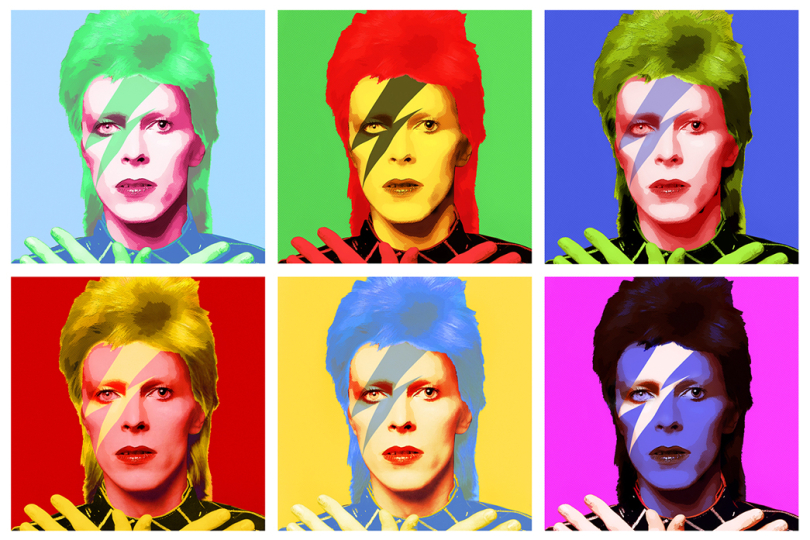
TOP 5 Musicians that Rewrote the Fashion History
Music is a phenomenon that goes far beyond the sound only. It brings new impulses and creates trends that often influence entire generations. And while some musicians channel their creative potential primarily into the music itself, for others, visual perception is an integral part of their work. Just as their music is unique and original, so they have a new approach to what a rock or pop star should look like. Let's take a look at some of the music celebrities who have transformed the fashion world for decades.
The following selection will not be exhaustive. It could be said that in every era, music stars are one of those who set fashion trends, and pushing the boundaries is in their job description, so to speak. Start looking for rankings of the most influential fashion icons in music history. You'll find that the names often don't overlap at all, and each author of such a list considers something different to be groundbreaking. I've chosen those whose names recur most often in the context of fashion and may also be an inspiration to us.
1. Elvis Presley
Of course, we start from the beginning... from the King of Rock'n'Roll who influenced not only how music sounded for decades to come, but also how musicians dressed. Rhinestone-studded trouser suits, high collars and the use of eyeliner. Although he often "just" used the fashion trends of the time, few could look so "cool". He also made black leather synonymous with rocker clothing – his black leather jumpsuit from the 1968 Comeback show caused a revolution.
Elvis' hairstyle deserves a separate mention, as many of his admirers tried to imitate it. His long "unfashionable" hair, inspired by his time as a truck driver, was in stark contrast to the trend of the time and reinforced his rebel image and sex appeal. Presley also dyed his hair regularly – unheard of for a man then – and applied three types of wax at once.
Interestingly, Elvis Presley did not wear jeans as a matter of principle, however fashionable they were. They were still partly seen as the working clothes of the workers and reminded him too much of his troubled childhood. The only exception was when a film role demanded it, or when Levi's offered to name its first collection of black jeans after him.
2. Madonna
In a musical career spanning over forty years, Madonna has managed to bridge the worlds of top fashion and music business like few others. When she unveiled her legendary pink cone bra corset during the Blonde Ambition Tour in 1990 to the song "Express Yourself", she catapulted herself into the ranks of pop culture icons and designer Jean Paul Gaultier as one of the most in-demand fashion designers of the decade. She commented on the uproar her costumes caused for the show at the time, sternly, "Art should be controversial, and that's all there is to it." Her collaborations and her close relationship with Jean Paul Gaultier continued in the following decades.
Madonna has never been afraid to cross boundaries, whether it was blending sexual and religious themes, as in the video for "Like A Prayer", which outraged both conservative Americans and Catholic Church leaders at the Vatican or mixing traditional men's and women's fashion. Some saw it as an attempt to attract attention at any cost, for others it remains a model of what a pop star should look like. In addition to Jean Paul Gaultier, she has collaborated with many other designers such as Versace and Stella McCartney and has appeared on the catwalks several times.
3. David Bowie
If anyone could aspire to be the winner of the poll for the greatest fashion icon in music history, it would probably be David Bowie. Just as brilliant as his music was his chameleon-like ability to change looks, with many of them making an indelible mark on fashion history. Bowie completely rewrote the definition of masculinity when he donned clothing or accessories originally designed for women. And while the media speculated about his sexual orientation, he didn't hesitate to combine a men's suit with earrings, heeled boots and bold makeup.
But perhaps more than any particular "look", what remains inspiring is the freedom with which he approached how he looked and who he was. You can take many forms and create a whole new identity for yourself... Each of his musical phases also brought a "different Bowie". The clothes become a costume, a disguise, a new skin that expresses a new image of the artist. David Bowie is still cited as an inspiration by many people across all creative disciplines.
4. Kurt Cobain
Kurt Cobain is seemingly at the opposite pole of the fashion spectrum from David Bowie. While Bowie remains an inspiration to fashion designers and the art world in particular, Kurt's legacy has seeped deep into our everyday lives. Yet they have this fundamental thing in common – the way you look reflects who you are. Bowie's true identity is hidden somewhere among all his different guises, but grunge is all about authenticity.
Flannel shirts, washed-out T-shirts, oversized sweaters, ripped jeans, worn-down Converse... And the odd accessory from a flea market or a woman's wardrobe. Things that today we take for granted as part of the fashion and style of many famous and unknown bands were revolutionary in the 90s. But for Kurt, they above all reflected his personality – a combination of rebellion, a reference to his working-class background, and an inner vulnerability and tornness.
5. Björk
Björk may not feature in the usual lists of fashion icons in music, but perhaps it's because her style is so distinctive and original that it remains simply hers. It's not easy to trace its direct impact on the fashion industry, yet many of her outfits, such as the swan dress from the 2001 American Academy Awards, have gone down in the fashion books. Wherever Björk appears on stage or the red carpet, we can expect something surprising.
Yet Björk is not trying to shock in the first place. Rather, her often bizarre creations are based on her artistic sensibility and unflagging playfulness and curiosity. Like her music, her concert costumes often draw inspiration from nature, different cultures and nations, and of course her native Iceland. On stage, Björk's sculptural dresses become almost a sculpture or art object themselves, complementing and emphasising the message of the music itself.
What is your choice of fashion icons from the world of music? And is fashion important in music at all? Let us know in the comments or on Facebook!
If you have found an error or typo in the article, please let us know by e-mail info@insounder.org.





